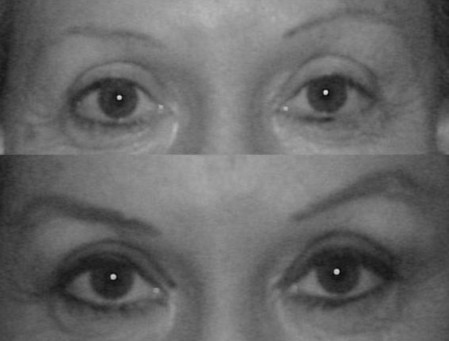Sunday, October 8, 2006
10674
Augmentation Blepharopexy
Augmentation Blepharopexy
Historically, surgical rejuvenation of the upper eyelid involved resection of redundant tissues. The results often showed deep and hollow appearing eyes. Recent papers have reevaluated the aesthetics of the periorbita (1,2,3). Maintaining volume is now thought critical to successful rejuvenation. This "volume" concept is fundamental to many areas of aesthetic surgery. Similar to the breast, upper eyelid repair requires attention to the positioning of a fold, to the volume of soft tissue above the fold, and to the vertical height of a crucial structure upon the soft tissue (nipple or eyebrow). As in breast aesthetics, certain problems of periorbital tissue ptosis and redundant skin can be solved with augmentation. Simple skin reduction may not provide the optimal result and certain small amounts of brow ptosis can be effectively treated with a volume enhancement rather than a brow lift.
A new technique for upper eyelid repair is presented that applies these concepts. The procedure consists of a standard blepharoplasty incision and augmentation of the upper periorbital area using transposed pseudoherniated and ptotic infrabrow fat. This procedure has been performed on forty-three patients, all with good to excellent cosmetic results. The single complication in the series was a patient that experienced transitory diplopia, which resolved with no intervention. The selection criterion for the procedure was the patient's desire or acceptance. Preoperative and postoperative photos will be shown as well as a video of the technique.
The augmentation blepharopexy technique yields consistent results that for many patients cannot be achieved with current techniques. It is technically simple and safe. We believe it is a useful new adjunct for upper eyelid rejuvenation
1,2,3,-jelks, zide, stuzin, feigen, rohrich

